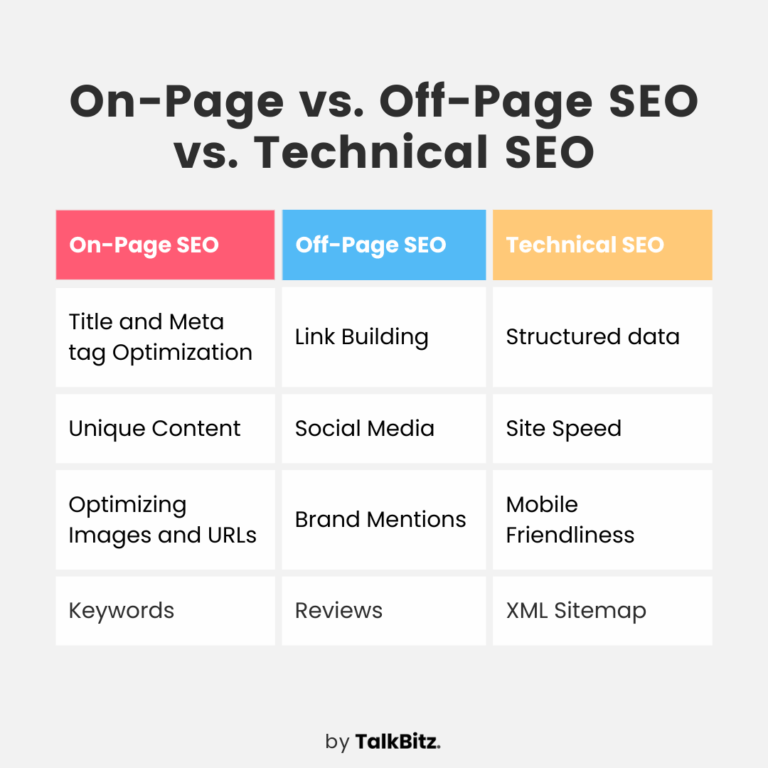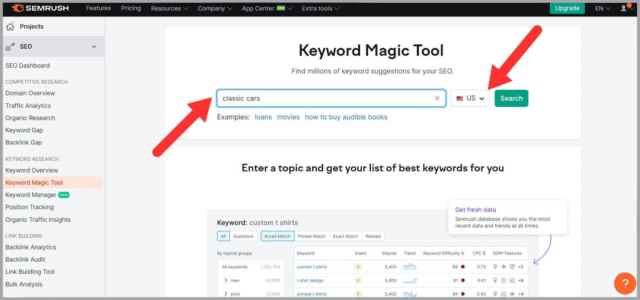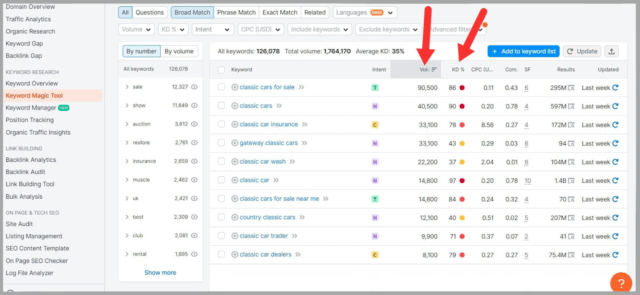
On page SEO
(Search Engine Optimization) is the practice of optimizing individual web pages to improve their search engine rankings and attract organic (non-paid) traffic. It involves various techniques and best practices to make a webpage more search engine-friendly and user-friendly. Here are key elements and strategies for effective on page SEO:
Keyword Research:
– Start by conducting thorough keyword research to identify relevant keywords and phrases that your target audience is likely to search for. Use keyword research tools to find valuable keywords with decent search volumes and manageable competition.
Title Tags:
– Create unique and descriptive title tags for each page. Include your primary target keyword near the beginning of the title tag. Keep title tags concise (around 60 characters) and compelling to encourage clicks in search results.
Meta Descriptions:
– Write informative and engaging meta descriptions for each page. Although meta descriptions don’t directly impact rankings, they influence click-through rates. Include your target keyword naturally and provide a concise summary of the page’s content.
Headers (H1, H2, H3, etc.):
– Use header tags (H1 for the main heading, H2, H3 for subheadings) to structure your content. Headers improve readability and help search engines understand the hierarchy of your content.
Keyword Optimization:
– Incorporate your target keywords naturally throughout the content, including in the main body, headings, and subheadings. Avoid keyword stuffing, which can harm rankings.
High-Quality Content:
– Create valuable, well-researched, and unique content that addresses the needs and questions of your audience. High-quality content is more likely to rank well and attract links.
Images and Alt Text:
– Use descriptive alt text for images to improve accessibility and provide context to search engines. Compress images to reduce page load times.
Internal Linking:
– Include relevant internal links to other pages on your website. Internal linking helps distribute authority and encourages users to explore more of your content.
External Linking:
– Link to reputable external sources when relevant. Outbound links can provide additional context and credibility to your content.
Mobile Optimization:
– Ensure your website is mobile-friendly and responsive. Google uses mobile-first indexing, so mobile optimization is crucial for rankings.
Page Load Speed:
– Optimize page load speed by minimizing code, using efficient hosting, and optimizing images. Faster-loading pages provide a better user experience and can positively impact rankings.
Secure Website (HTTPS):
– Use HTTPS to secure your website. Secure sites are favored by search engines and can rank higher.
User Experience (UX):
– Focus on providing an excellent user experience. Ensure easy navigation, clear call-to-action buttons, and a clean design.
Schema Markup:
– Implement structured data (Schema markup) to enhance search results with rich snippets, which can improve click-through rates.
Social Sharing:
– Encourage social sharing of your content by adding social sharing buttons to your pages.
Regular Updates:
– Keep your content up to date and relevant. Fresh content can attract both users and search engines.
XML Sitemap:
– Create and submit an XML sitemap to search engines to help them discover and index your pages efficiently.
Robots.txt and Meta Robots:
– Use robots.txt and meta robots tags to control what search engines can and cannot crawl on your site.
Analytics and Monitoring:
– Implement web analytics tools like Google Analytics and Google Search Console to track performance, monitor rankings, and identify areas for improvement.
Your Complete Guide to On-Page SEO will help answer questions like:
- What is on-page SEO? And, why is it important?
- How do I perform a content audit?
- What is E-A-T and how does it impact my on-page SEO?
- How do I optimize my title tags and meta descriptions?
- How should I write my header tags?
- Is keyword cannibalization sabotaging my rankings and traffic?
- Do I need to structure my content differently for featured snippets?
Smart SEO practitioners know: on-page optimization is a constant process. It is one of the most fundamental parts of making sure your content exists on search engine results pages.
On-page SEO doesn’t end with a perfect page; you have to constantly review and audit your content to make sure it’s good, relevant, and up to date.
As Google improves, it gets even better at understanding what users are searching for and how to meet their needs. This means you have to ensure your content is up to snuff to beat the competition.
In partnership with Moz and WebCEO, we created this complete guide to help refresh your on-page SEO knowledge and keep you updated on the current best practices for optimizing on-site ranking signals.
Then, type in the keyword you want to research, select your region and hit the search button.

You will then get a list of related keywords.
It also shows you some really handy information like search volume and keyword difficulty.

(Most of which came from SEO.)
The best part?
All of these tools work GREAT in 2023.
Let’s get started…
- Semrush
- Answer The Public
- Woorank’s SEO & Website Analysis Tool
- Animalz Revive
- CanIRank
- Google Lighthouse
- Google’s Mobile-Friendly Test
- Seoquake
- Seed Keywords
- Exploding Topics
- GTmetrix
- Schema.org
- Seobility
- Ubersuggest
- Similarweb Browser Extension
- BROWSEO
- Detailed.com
- Grammarly
- Google Search Console
- SERPerator
- Google Trends
- Rank Math
- Screaming Frog
- Soovle
- Shortpixel
- Google Analytics
- Reddit Keyword Research Tool
- Mozbar
- Yoast WordPress Plugin
- Panguin Tool
- Wordtracker Scout
- Cloudflare
- 33. ChatGPT
- BrightLocal’s Local SERP Checker
- Hunter.io
- Lipperhey
- Bing Webmaster Tools
- Dareboost
- Siteliner
- KWFinder
- People Also Ask
- Bonus #1. Bulk Google Rank Checker
- Bonus #2. LSI Graph
On page SEO is a critical part of your overall SEO strategy and plays a significant role in improving your website’s visibility in search engine results. Regularly review and update your on-page SEO efforts to stay competitive in search rankings.
– Homepage
– SEO Strategies
– On-Page SEO Techniques
– On-Page SEO Table
– Off-Page SEO Techniques
– SEO Tools
– Keyword Research Tools
– On-Page SEO Analysis Tools
– Backlink Analysis Tools
– SEO Blog
– Latest Trends in On-Page SEO
– How to Create an Effective On-Page SEO Table
– About Us
– Our Team
– Our Mission and Values
– Contact Us
